Waschi, Waschi!” The words echo through Karlsaue Park in the German city of Kassel. A slim woman in her 50s is calling out her pet name for a wild raccoon. It’s a late summer evening in July, and she’s waiting with a loaf of bread. Raccoons are nocturnal, and the settling twilight has awoken them.
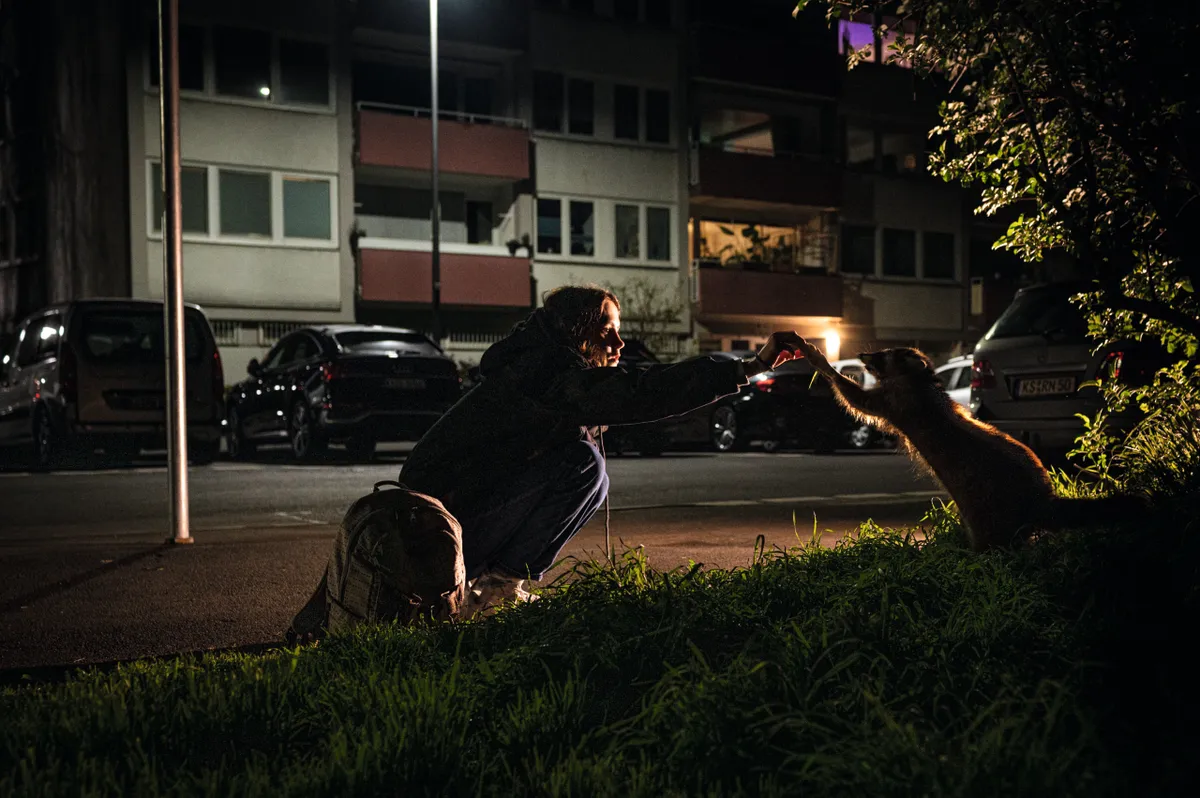
Waschi is a female the woman tells us. Right on cue, the raccoon promptly appears from the dark bushes on light-footed paws, her clan following suit. The animals are not remotely shy, clambering all over the woman as they sniff out the food. “It’s amazing how intelligent they are, and they’re just so cute,” she says. Within minutes, a dozen raccoons have gathered around, standing up and reaching out, hoping to grab a share of an easy meal.
Why do raccoons rub their hands?
Waschi was named after the German word for raccoon, waschbär, which translates as ‘washing bear.’ Raccoons, much like humans, use their small, hand-like paws for grasping, and explore their surroundings through touch. The many sensitive nerves in their paws function best when wet, which explains why raccoons are often seen ‘washing’ them in waterways such as the Fulda River, which flows through Kassel, or one of its many ponds or canals.
Where do raccoons sleep in the city?
After the sun sets, these so-called ‘masked bandits’ take over the parks and streets of this city, where 200,000 people live. They climb out of their daytime sleeping dens, located high in old oak and beech trees, chimneys or garden sheds, and do the rounds of their favourite bins and fruit trees, brazenly crossing busy streets and sauntering into homes and gardens in search of food. Along the way, they fight off cats and dogs, who want to steal their plunder. So high is the population of raccoons in Kassel that it is now dubbed the ‘raccoon capital of Europe’.
The common raccoon may seem very at home on these streets, but it is in fact an invasive species, native to North America. Today, it is thriving not only in Kassel, but in cities across the country, with particularly high densities in the states of Hesse and Brandenburg. Exact population data is unknown, but it’s thought there could be as many as 1.5 million individuals here.

Raccoons were introduced to Germany in the 1930s and initially kept in captivity for their fur. Some escaped from fur farms around Berlin during World War II, while others were intentionally released into the wild. Every resident of Kassel knows the tale of the two raccoon pairs that were released in 1934 at Lake Edersee to ‘enrich’ the local wildlife population.
Since then, numbers have increased exponentially, and the animals have spread into neighbouring countries, with Belgium, France, the Netherlands, and Italy experiencing increases in raccoon populations, too. With concern growing about the newcomers’ potential impact on native flora and fauna, the EU added the common raccoon to its invasive species list in 2016.
What do racoons eat in the city?
Raccoons are omnivores and have few natural predators. They prey on birds and amphibians, some of which, for instance the yellow-bellied toad, are already highly endangered due to habitat loss, among other causes. “The toads have poisonous skin, but the raccoons just peel it off. We’ll find a bunch of skins lying next to a pond, and little paw prints,” says Andreas Opitz, a biologist who works for the Hessian Agency for Nature Conservation, Environment and Geology. Ponds must now be protected with nets and electrical wiring, or all their toads will be eaten.
The long-term impact of the raccoon on the German ecosystem, however, remains unclear. Some biologists believe that the perceived threat of raccoons is exaggerated. “Raccoons are lazy. They mainly eat what is easy to obtain, which is usually prey species that are abundant and readily available,” says Berit Michler, a leading raccoon biologist, who has researched the animals extensively for several decades in Müritz National Park, between Berlin and Rostock.
Studying raccoon faeces in the park, Michler mainly found the remains of earthworms, fruit, acorns, shallow-water fish and snails. The number of birds in the research area did not decrease over time, she says, “In fact, it went up, even though this nature reserve is one of the most densely populated with raccoons in Germany.”
How have raccoons adapted to city life?
The cities and suburbs of Germany make ideal habitat for these highly adaptable, opportunistic creatures, offering ample food and shelter. But city living means sharing space with humans, and reaction to raccoons is mixed.
While some, like the woman in Karlsaue Park, are quite charmed by their character, intelligence and mischievous ways, going as far as hand-feeding the animals at night or selling raccoon-themed mugs and T-shirts to tourists, there are others who are less fond of their new neighbours.
The problems raccoons cause are obvious. They have learned to crawl into bins as they search for food, leaving trails of scattered debris in their wake. Stones placed on lids as a deterrent are simply tossed aside – only locks and straps can defeat them. The animals also break into houses for shelter, depositing faeces, damaging and dislodging roof tiles, and tearing away at insulation.
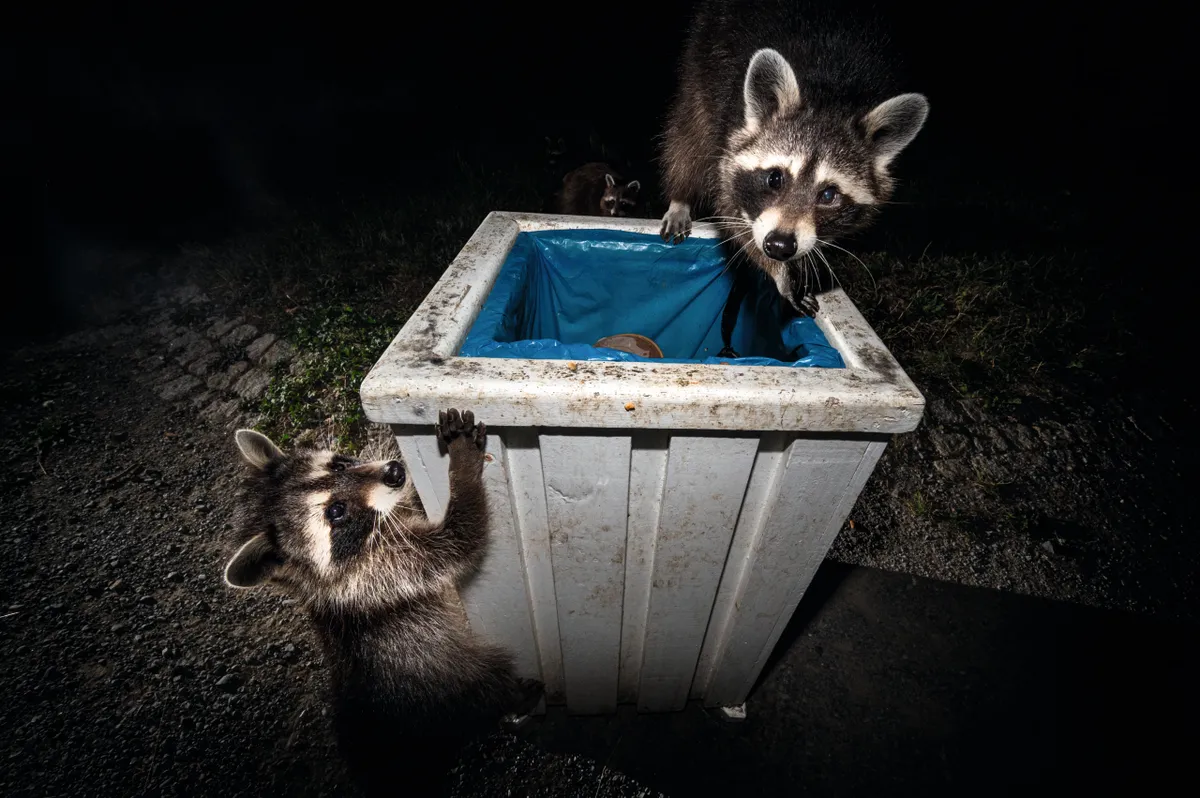
Are raccoons rodents?
“They are a pest,” says Frank Becker, a former electrician who now works as a raccoon hunter. “I’ve seen attics that have been completely ruined by raccoons – the costs of the damage can be as much as €10,000. I’ve seen one house that had to be demolished entirely.”
After the species’ introduction in 1934, the hunting of raccoons was initially restricted. But, after a few years, farmers in Hesse started to notice that the animals were raiding their chicken coops and crops. In 1954, Hesse was the first state to implement culling, which is now legal in all German states.
Culling is usually restricted during the breeding season because raccoon kits will die without parental care. During that time, only juveniles can be targeted, though in the states of Berlin and Baden-Württemberg, both adults and juveniles are protected during the spring and summer months.
Raccoon hunting divides Germans, who view it as either a cruel practice or a necessary means of pest control. Several organisations have called for a halt on culling, including PETA. Nonetheless, hunting is a big part of German culture.
Some 400,000 people are registered with hunting associations, and they feel it is their obligation to protect endemic species. In the hunting season of 2021 to 2022, more than 200,000 raccoons were killed, according to data from the German Hunting Association. That said, the raccoon isn’t deemed a popular catch, as its meat isn’t eaten, and its fur is now virtually worthless.
Raccoons - here to stay in Germany?
Becker, Michler and Opitz all agree that the raccoon has established itself in Germany for good. Despite the high numbers culled, there are simply too many raccoons for the hunters to cope with. “When you take raccoons away from an area, new ones enter immediately,” says Opitz.
Plus, when raccoons are killed, the breeding success of other raccoons in overlapping territories is assumed to improve, because they have more resources available. The only option left is for people and raccoons to find a way to live together.
Becker believes that home protection is the answer. He has become something of an expert on raccoon deterrents, which adorn properties all over Germany. His bestseller is a smooth plastic covering that prevents raccoons from scaling drainpipes. Becker also sells elaborate wiring systems for rooftops and fences, and one-way systems for entry holes that allow raccoons to exit, but not to re-enter.
Can raccoons be pets?
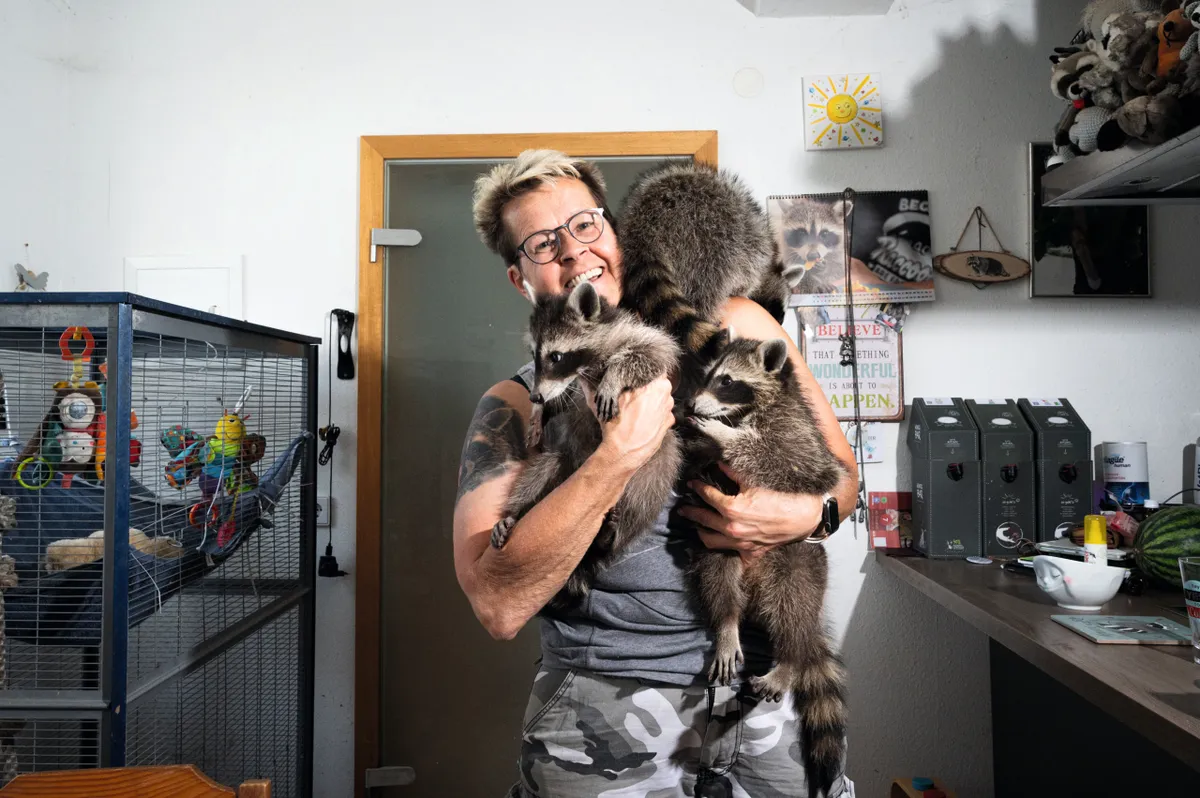
Keeping a single raccoon isn’t allowed in Germany. These are social animals, and often develop behavioural problems when kept in captivity alone. This is why raccoon owners are formally obliged to keep at least two of them. They have to find a buddy for their pet and often source them through online networks such as Facebook groups.
Other EU invasive species
Egyptian goose
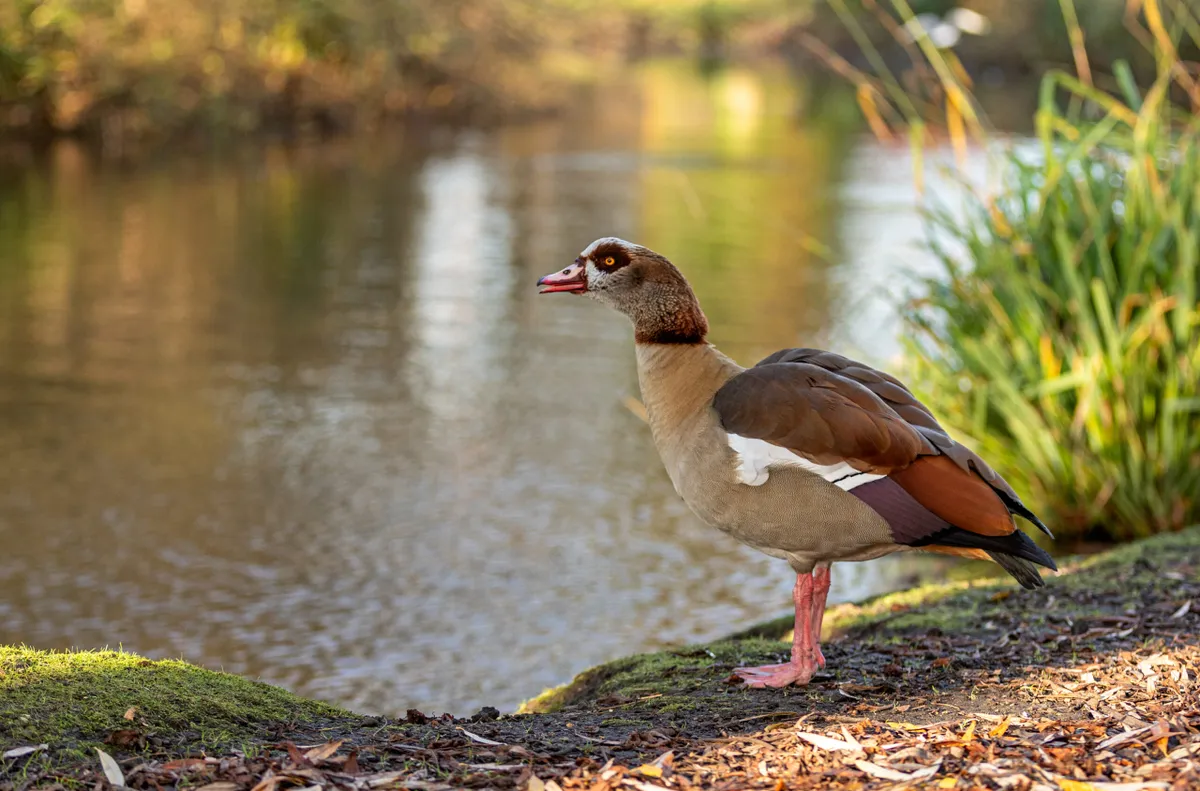
- NATIVE TO: Nile Valley, sub-Saharan Africa.
- INTRODUCED FOR: Ornamental features. Escaped, establishing wild populations. Now widespread in north-west Europe.
- IMPACT: Competes with native birds; damages crops.
- MEASURES: Ban on intentional keeping; population control through shooting and trapping.
Raccoon dog
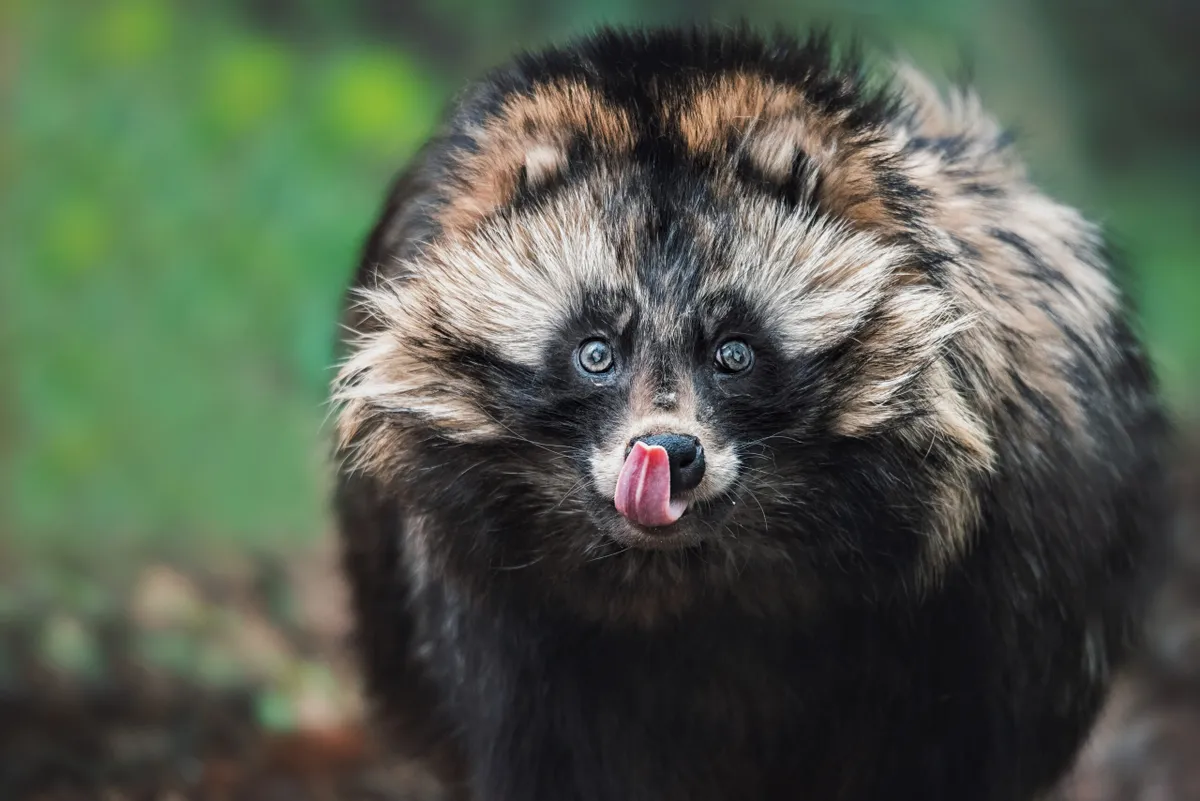
- NATIVE TO: East Asia.
- INTRODUCED FOR: Fur farming. Escaped, establishing wild populations. Now widespread in north-east and north-west Europe.
- IMPACT: Threat to native wildlife and birds.
- MEASURES: Ban on sale or breeding; control through hunting and trapping.
Red swamp crayfish
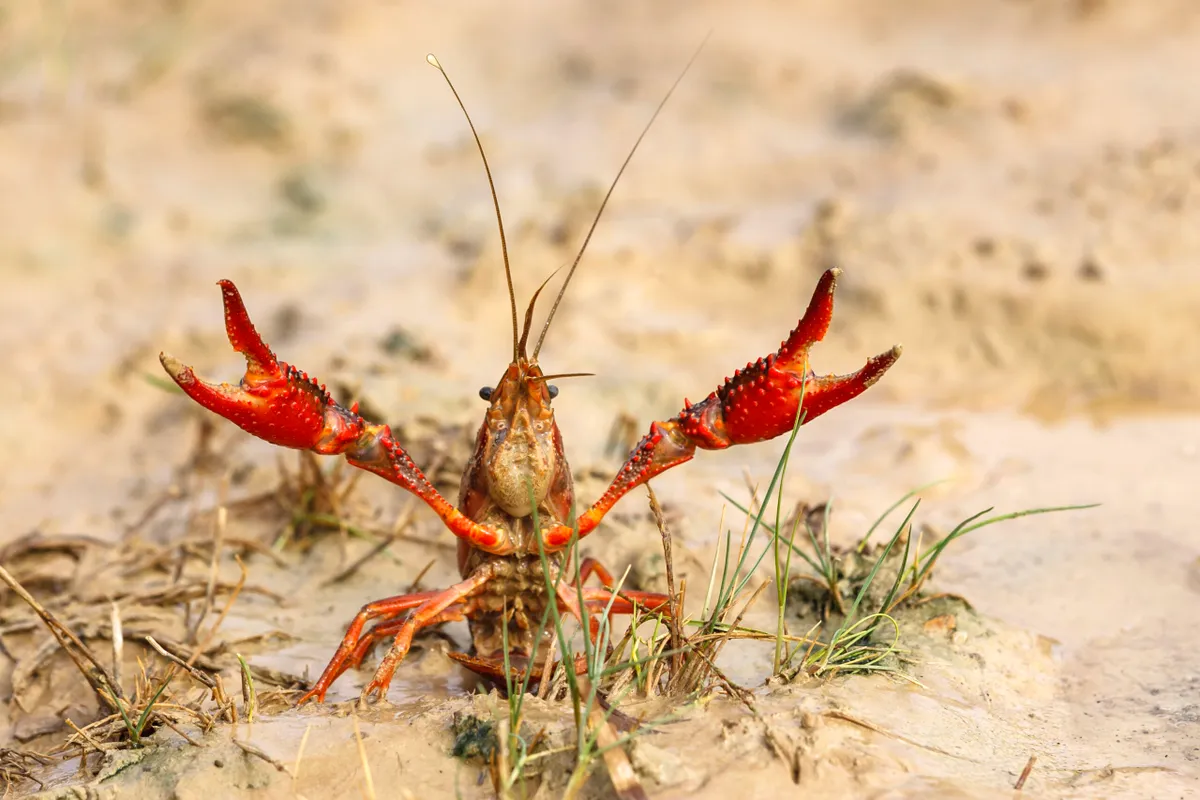
- NATIVE TO: North America.
- INTRODUCED FOR: Aquaculture. Wild populations have been established due to intentional and accidental releases.
- IMPACT: Disrupts ecosystems; outcompetes native crayfish.
- MEASURES: Ban on cultivation and transport; containment and monitoring.
Want to find out more?
Check out our expert guide to raccoons, as well as comprehensive guides to mammals, which includes fascinating facts on a huge range of species, from armadillo to wolverine.